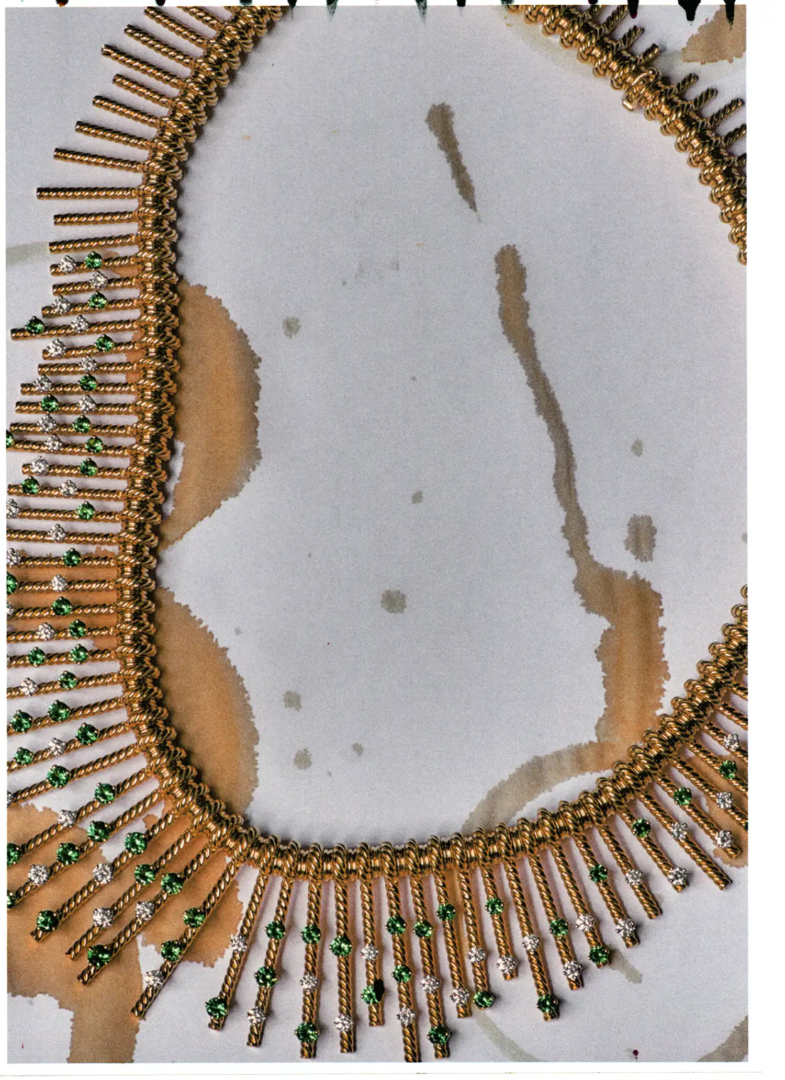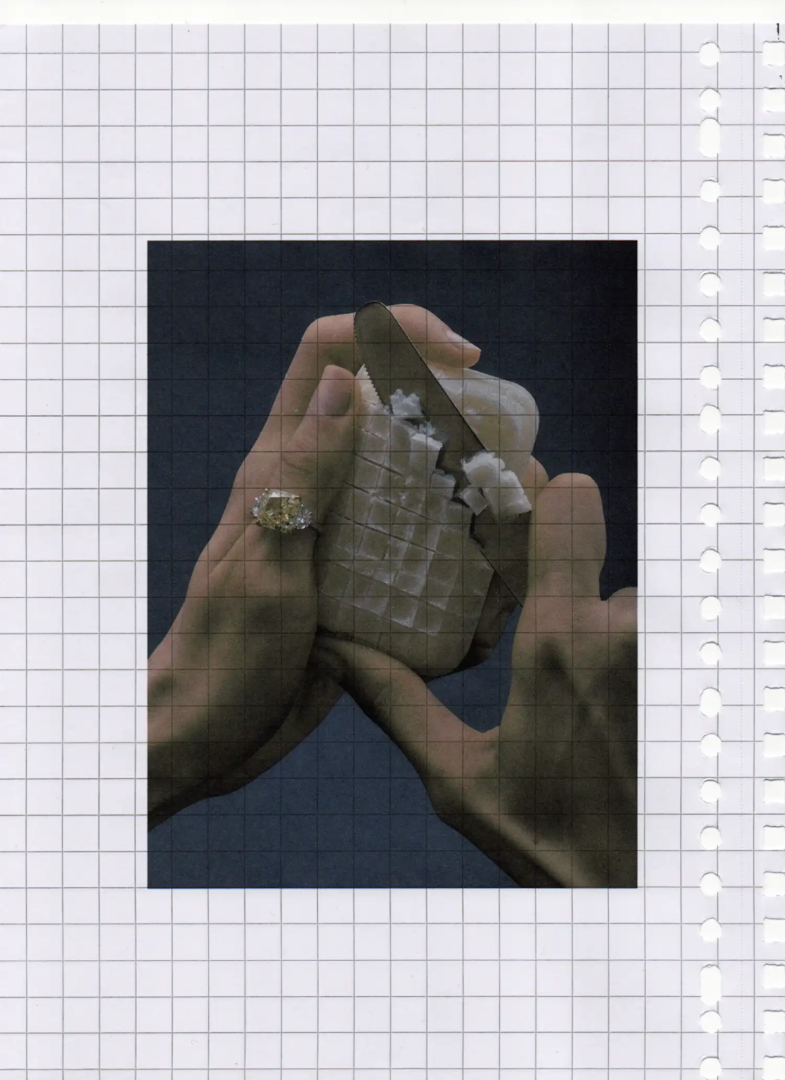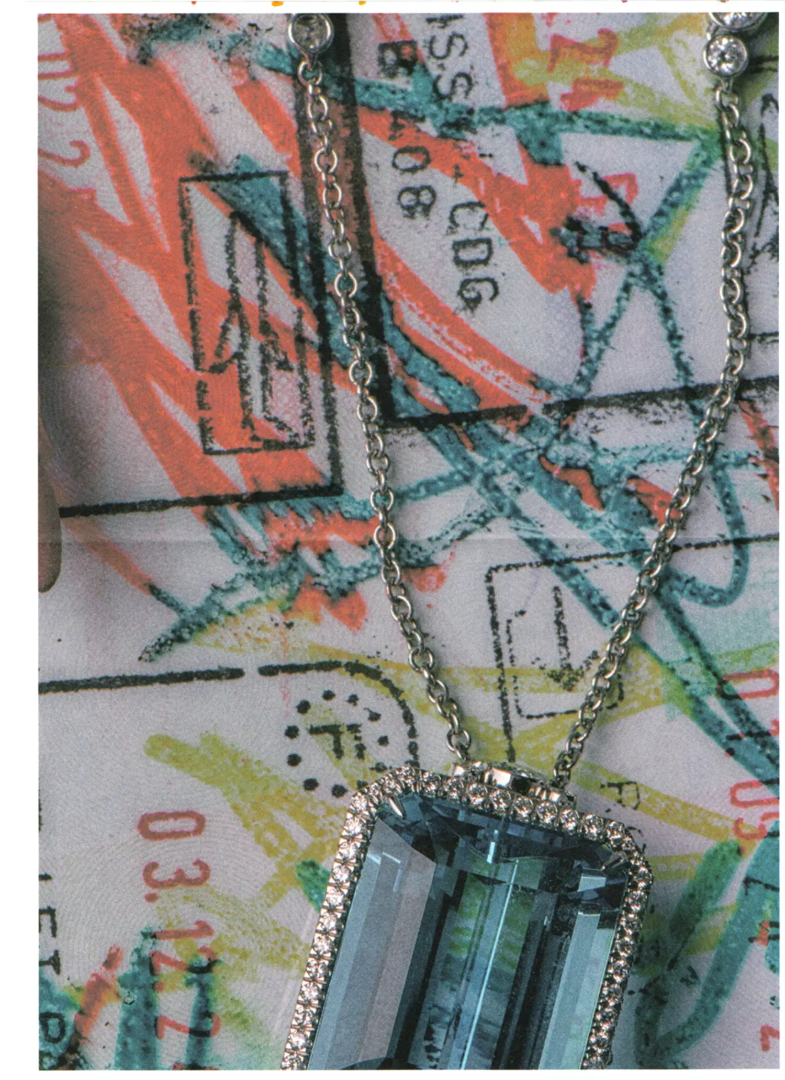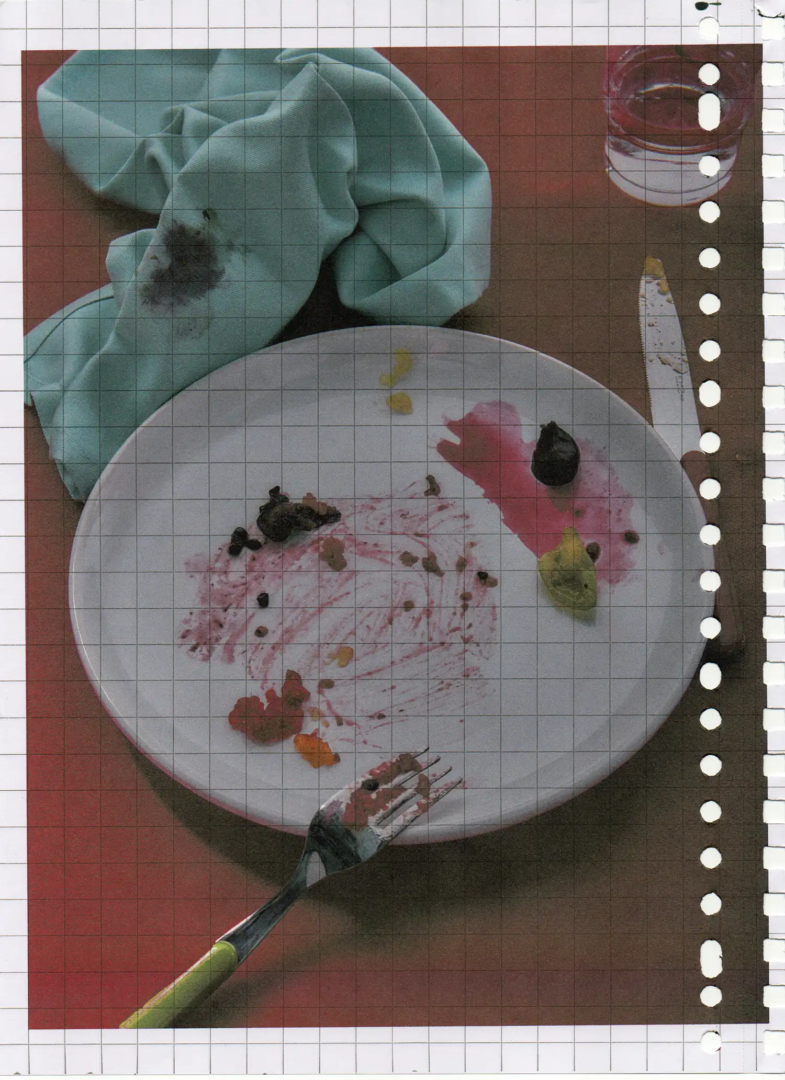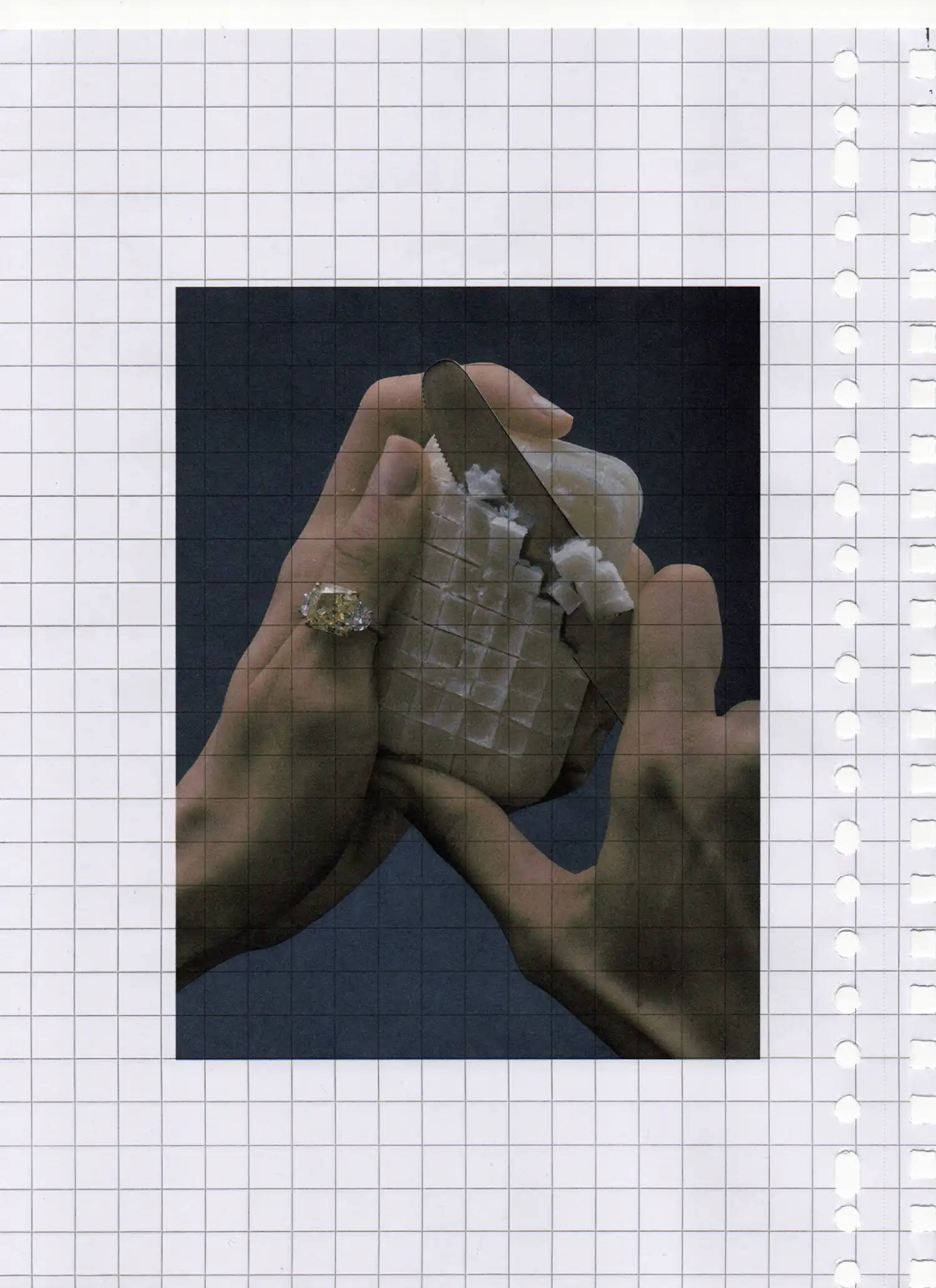
Lampoon: a bar of soap cut into squares for Tiffany & Co.
Lauren Bamford transforms Tiffany’s high jewelry into works of contemporary still life – coffee stains, soap cuts, and scuffed textures surround gold and diamonds
Lauren Bamford x Lampoon Soap: Tiffany & Co. Reimagined in the Everyday
In Lauren Bamford’s photographs for Lampoon SOAP, Tiffany & Co.’s high jewelry takes on a disarmingly human tone. There is no velvet tray, no immaculate showcase, no black-gloved hand presenting perfection under the right light. Instead, gold, platinum, and diamonds are laid against coffee stains, scuffed suede, scribbled notebooks, and traces of imperfection — the mundane residues of a lived-in world.
This series proposes a shift: what if the sacred becomes tactile — and the sublime is found not in distance, but in proximity?
The Visual Grammar of Imperfection
Bamford’s lens approaches jewelry not as a status symbol but as a narrative object. Her compositions suggest spontaneity and human presence without ever showing the wearer. A necklace draped over stained paper becomes both artifact and accident; a pendant set against colorful scribbles suggests a page torn from a travel diary; a diamond choker uncoiled beside a dirty shoe heel becomes a silent witness to a night out, a trace of movement, a memory.
The artist introduces a bar of soap cut into squares. The gesture recalls ASMR rituals found across TikTok and social media: the hypnotic satisfaction of slicing soap, the intimate rhythm of touch, the small pleasures of ordinary life.
Jean Schlumberger by Tiffany & Co.: The Art of Imagination
Among the featured pieces, the Jean Schlumberger by Tiffany & Co. gold and platinum fringe necklace with tsavorites and diamonds stands out as a tribute to one of the house’s most legendary designers.
Jean Schlumberger (1907–1987) was a French jewelry artist whose career redefined the boundaries between design, art, and fantasy. Born in Alsace, he began as a painter and illustrator before joining the fashion world, working with Elsa Schiaparelli in the 1930s. His early designs already carried the surrealist energy of his time: unexpected forms, organic lines, and a fascination with nature’s whimsy.
In 1956, he was invited by Tiffany & Co. to join as a designer — an extraordinary move for both parties. Schlumberger brought a distinctly European artistic sensibility to the American house, infusing its tradition of refinement with imaginative vitality. His creations often drew inspiration from coral reefs, sea creatures, and exotic flora. They seemed alive, pulsing with motion and narrative.
The fringe necklace photographed by Bamford carries this spirit: gold and platinum intertwine like coiled vines, each tip adorned with tsavorites and diamonds — green and white sparks of light. Schlumberger’s genius was in his ability to animate metal, to make it dance. His work at Tiffany became synonymous with audacity and craftsmanship, admired by figures like Jacqueline Kennedy, who famously collected his enamel bracelets.
Bamford’s decision to place this necklace against a stained surface transforms its aura. The piece becomes less a museum artifact and more a companion object, capable of existing among human imperfections. The coffee stains echo Schlumberger’s own playfulness — his refusal to treat beauty as something solemn or static.
The Tiffany Soleste® Collection: Light in Motion
Another image in the series presents the Tiffany Soleste® platinum pendant with aquamarine and diamonds, a piece that celebrates luminosity. Named after the Spanish word sol, meaning “sun,” the Soleste collection revolves around light — its refraction, its movement, its emotional resonance.
Each Soleste jewel features a vibrant center stone encircled by a double halo of diamonds, creating a subtle vibration of brilliance. The collection pays homage to Tiffany’s heritage of gemstone expertise while infusing it with a modern sense of clarity and color. The aquamarine in Bamford’s photograph, framed by an artfully chaotic background of colored markings, becomes almost cinematic.
The juxtaposition between the pendant’s precision and the freehand strokes beneath it suggests a tension between order and chaos — between craftsmanship and spontaneity. Bamford’s background could be read as a passport stamp collage or a sketchbook cover, hinting at the modern nomad’s life. The pendant becomes not a jewel to be locked away, but a talisman for travel, creativity, and light.
By setting the Soleste against this textured backdrop, Bamford underscores its conceptual core: that light exists only in relation to shadow and color. The aquamarine’s icy transparency glows brighter for being surrounded by raw expression.
The Tiffany Victoria® Collection: A Modern Renaissance of Diamonds
The Tiffany Victoria® platinum necklace with diamonds, captures the essence of refined femininity. Inspired by the natural forms of leaves and vines, the Victoria collection embodies Tiffany’s botanical heritage — a theme that dates back to its 19th-century nature studies.
Crafted from a combination of marquise, pear, and round brilliant diamonds, each piece in the Victoria line evokes organic movement. The necklace photographed by Bamford, coiled casually near the heel of a worn lavender shoe, reveals both vulnerability and strength. The shoe’s stained sole contrasts with the crystalline perfection of the diamonds, suggesting that grace and grit coexist in modern femininity.
The Victoria collection’s design language speaks to timelessness — each diamond is set to reflect the next, creating an unbroken rhythm of light. Yet in Bamford’s composition, this rhythm meets the rawness of reality. It’s an almost cinematic metaphor: beauty surviving in the aftermath of a night out, the traces of elegance persisting amid chaos.
Editorial team
